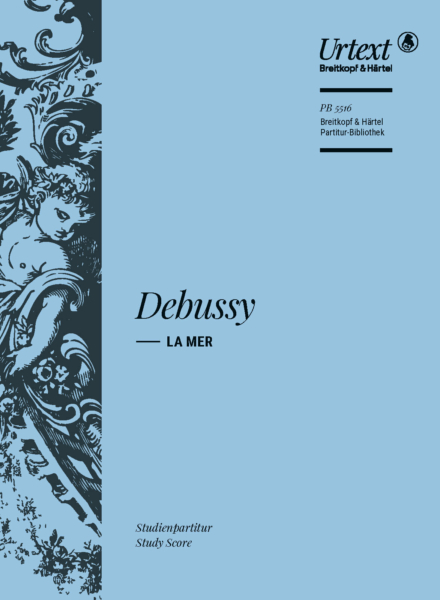Claude Debussy (1862–1918) La Mer
Trois Esquisses Symphoniques – Urtext edited by Peter Jost [orch] Duration: 23'
picc.2.2.cor ang.2.3.dble bsn – 4.3.2corn.3.1 – timp.perc – 2hp – str
If necessary, you can change the order quantity after having added the selected article to your shopping cart.
The three symphonic sketches “La Mer” are, after Prélude à “L'aprèsmidi d'un faune”, no doubt Debussy's most frequently performed orchestral work. This success derives in part from its formal resemblance to a symphony, which had already been noted by the composers contemporaries, and in part from its sound, which was associated from the very start with the shimmer and iridescence of Impressionism.
Peter Jost takes all major sources into consideration. Ultimately, the musical text of his Urtext edition is based on a copy of the second edition of the score, published in 1909, in which the composer incorporated his experiences as auditor and conductor into a last authorized version. After the cool reception given La Mer at its world premiere, Debussy revised the work and conducted the extraordinarily successful performances of it in early 1908 in Paris, London and Rome.
| 1. De l’aube à midi sur la mer |
| 2. Jeux de vagues |
| 3. Dialogue du vent et de la mer |










 Look inside
Look inside